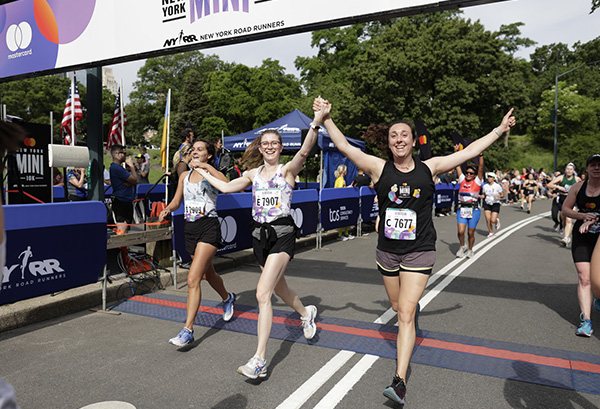Participación de las mujeres en la carrera: pasado, presente y futuro

Updated February 2024.
When NYRR was founded in 1958, all of the 47 members were men. The earliest records of women members, and women finishers in races, occur about a decade later.
These facts aren’t surprising, given that until 1960, the longest distance women could run in the Olympics was 200 meters. The Amateur Athletic Union, the governing body of running, officially prohibited women’s participation in road racing.
Internationally, the first woman known to run an officially timed marathon was Violet Percy of Great Britain, who in 1926 ran 3:40:22, which stood as the unofficial world best until 1963.
The few references to women in NYRR newsletters from the 1960s reflect the fact that women at the time simply were not seen as runners and didn’t view themselves that way. A few women took on support roles—cheering from the sidelines, handing out water, driving the men to races.
The first New York City Marathon, in 1970, had 55 finishers, all of them men; the one woman entrant, Nina Kuscsik, dropped out due to illness. Women were barred from most other marathons at the time, including the Boston Marathon, which didn’t officially accept women until 1972.
Even in 1976, the year of the first five-borough New York City Marathon, only 63 of the 1,549 finishers were women.
Women’s participation began to grow, and in the 1979 New York City Marathon, 1,203 of the 10,477 finishers were women—nearly 12 percent of the field. The growth continued steadily, and by 2019, about 42 percent of the 53,640 finishers of the TCS New York City Marathon were women.
In 2022, women made up about half of all finishers of NYRR races at all distances; for finishers ages 18–39, close to 60 percent are women.
Women also make up about half of all members of NYRR, and they outnumber men in the younger age brackets.
All these figures tell an amazing story of growth and opportunity, but we also have a long way to go in terms of full equality for women in running. In particular, women of color, transgender women, and non-binary runners are under-represented, there are fewer women than men running coaches in high schools, colleges, and for elite athletes, and all women face challenges related to safety and women-specific health and life-stage issues from adolescence to pregnancy/motherhood, menopause, and more.
More than 50 years have gone by since the passage of Title IX, the landmark 1972 legislation that bars federally funded education programs from discriminating on the basis of sex and has paved the way for equal opportunities for women and girls in sports. Throughout this history, NYRR has championed women’s participation in running. We look forward to the next 50 years and beyond.